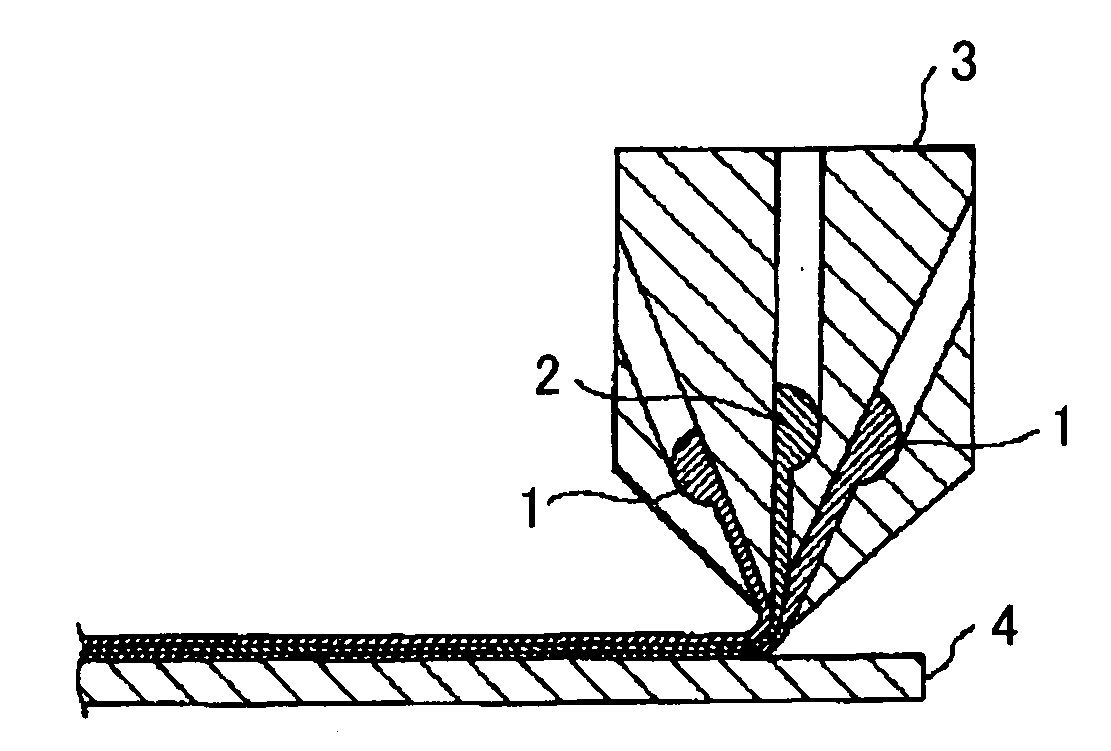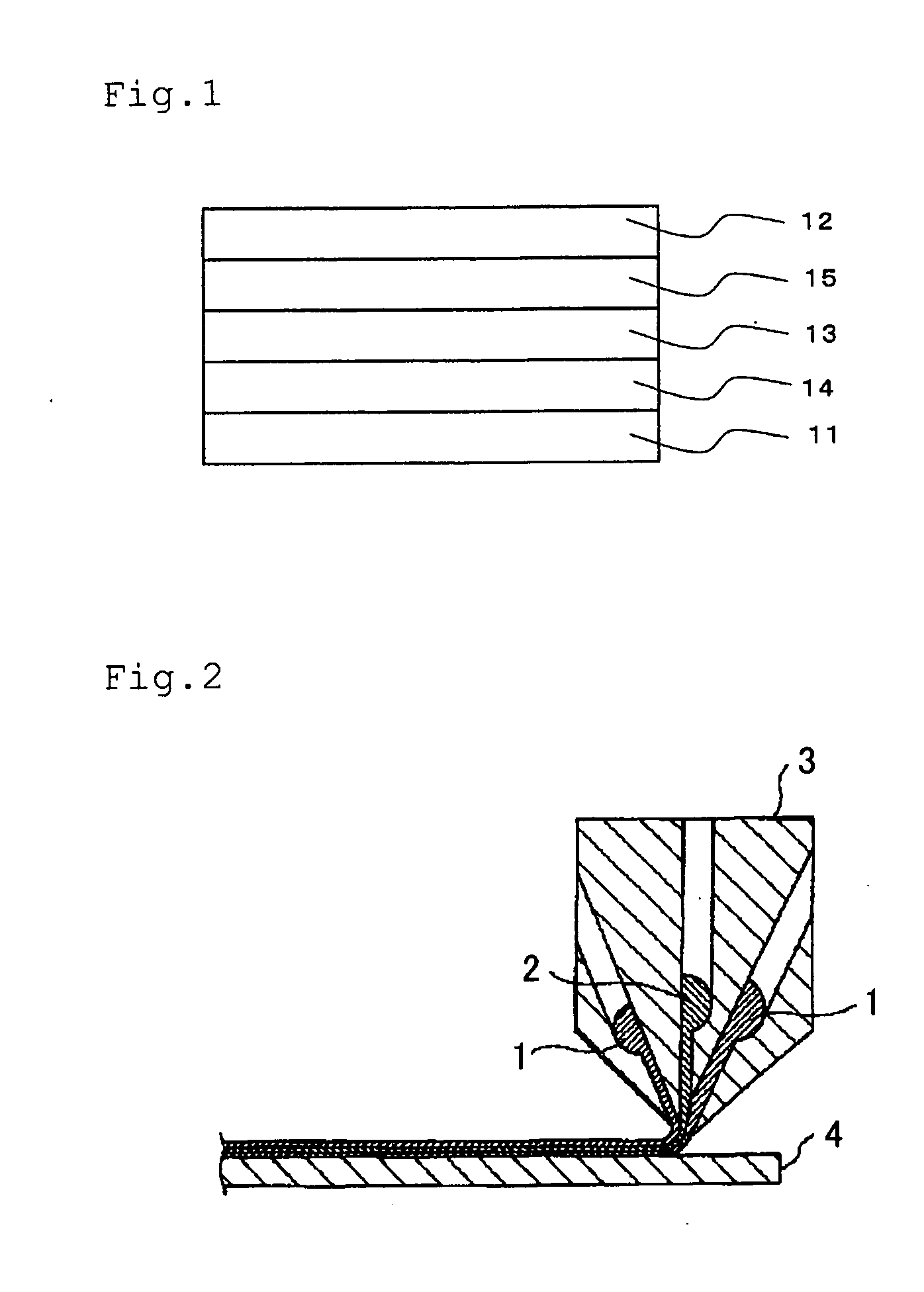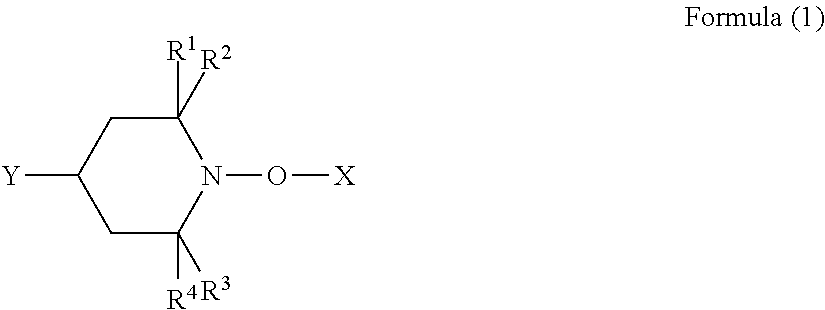Polarizer protective film, polarizer, and liquid crystal display device
- Summary
- Abstract
- Description
- Claims
- Application Information
AI Technical Summary
Benefits of technology
Problems solved by technology
Method used
Image
Examples
example 101
(1) Formation of Cellulose Acylate Film
[0297]Cellulose acylate having a degree of acetyl substitution of 2.87 was prepared. As a catalyst, sulfuric acid (7.8 parts by mass relative to 100 parts by mass of cellulose) was added to cellulose, and a carboxylic acid to be the starting material for the acyl substituent was added thereto for acylation at 40° C. After the acylation, the system was ripened at 40° C. Further, the cellulose acylate was washed with acetone to remove the low-molecular fraction therefrom.
101>
(Preparation of Cellulose Acylate Solution)
[0298]The following composition was put into a mixing tank and stirred to dissolve the ingredients, thereby preparing a cellulose acylate solution 1.
Composition of Cellulose Acylate Solution 1Cellulose acetate having a degree of acetyl substitution100.0 mas. pts.of 2.87 and a degree of polymerization of 370Triphenyl phosphate 8.0 mas. pts.Phenylbiphenyl phosphate 4.0 mas. pts.Methylene chloride (first solvent)353.9 mas. pts.Methanol ...
examples 102 to 114
, and Comparative Examples 201 to 204
[Production of Polarizer Protective Films of Examples 102 to 114 and Comparative Examples 201 to 204]
[0315]Polarizer protective films of Examples 102 to 114 and Comparative Examples 201 to 204 were produced in the same manner as in Example 101, except that the type and the amount of the antioxidant, the type and the amount of the plasticizer, the type and the amount of the organic acid, and the thickness of the film were changed as in Tables 2 to 4. Specifically, in the polarizer protective films of Examples 102 to 114 and Comparative Examples 201 to 204, the active energy ray-curable layer was formed in the same manner as in Example 101.
[0316]In the following Table 2 to Table 4, the amount of the antioxidant, the plasticizer and the organic acid is in terms of part by mass relative to 100 parts by mass of the cellulose acylate resin. In the following Tables 2 to 4, sucrose benzoate is Daiichi Kogyo Chemical's Monopet (trade name) SB. In the foll...
example 301
[Production of Liquid Crystal Display Device]
[0330]The viewers' side polarizer was peeled away from a commercially-available liquid crystal television (SONY's Bravia J5000), and the polarizer of the invention comprising the polarizer protective film of Example 101 was stuck thereto using an adhesive, in such a manner that the polarizer protective film of Example 101 could face the liquid crystal cell in the device. In this, the transmission axis of the viewers' side polarizer was set in the vertical direction. In addition, liquid crystal display devices of Comparative Examples were produced in the same manner as herein except that the polarizer protective film of Comparative Examples 201 to 204 was used. As compared with the liquid crystal display devices of Comparative Examples, the liquid crystal display device of the invention thus produced was good since the display performance thereof deteriorated little even when used in the outdoor environment under direct sunlight for a long...
PUM
| Property | Measurement | Unit |
|---|---|---|
| Percent by mass | aaaaa | aaaaa |
| Percent by mass | aaaaa | aaaaa |
| Temperature | aaaaa | aaaaa |
Abstract
Description
Claims
Application Information
 Login to View More
Login to View More - R&D
- Intellectual Property
- Life Sciences
- Materials
- Tech Scout
- Unparalleled Data Quality
- Higher Quality Content
- 60% Fewer Hallucinations
Browse by: Latest US Patents, China's latest patents, Technical Efficacy Thesaurus, Application Domain, Technology Topic, Popular Technical Reports.
© 2025 PatSnap. All rights reserved.Legal|Privacy policy|Modern Slavery Act Transparency Statement|Sitemap|About US| Contact US: help@patsnap.com



